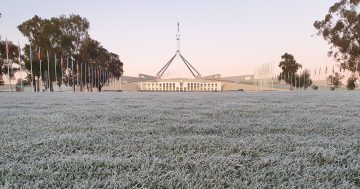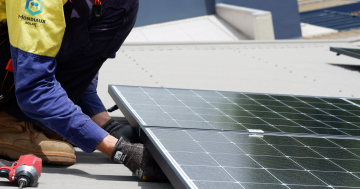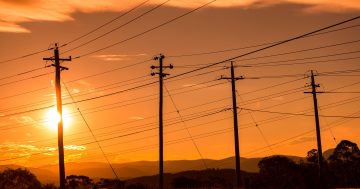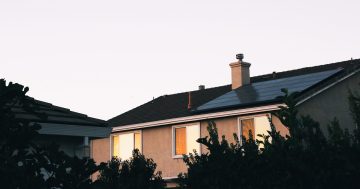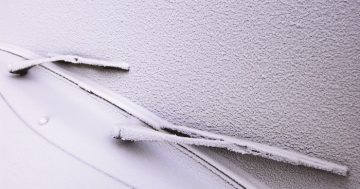
Canberra. Winter. It is the one thing that residents elsewhere in Australia consistently use against us as a reason not to visit. And yes, it is cold. The best way to overcome the cold is to make your home nice and snug, and I am going to show you some ways to do that without the steep price tag.
I migrated down to Canberra 17 years ago from the warmer climate of Brisvegas. My two flatmates, former Uni friends, decided to leave the heater on all night so as to ensure our apartment resembled the climate to which they had become accustomed. I tried to warn them but they thought I was just a negative doomsayer. Three months later we were whopped with a $600 bill. That was in May before the worst even started.
Since then I have become a little more savvy and attuned to the use of winter energy. I still want to keep my kids and I warm; I may have frugal ears but I don’t want icicles dripping off them. Nor do I currently want to invest in high-cost energy saving infrastructure such as solar PV panels, double glazing, or building a solar passive home from scratch – these are important but not currently within my budget. With energy prices going up by up to 10.9% in the ACT from 1 July 2017, saving energy is even more important for me. So here are some of the tips that I use to keep us snug in winter:
1. The hot water bottle.
When I am home by myself and watching TV on the sofa, or sitting writing articles for The RiotACT I find that a hot water bottle is all that I need to stay warm. Sometimes I drape a small blanket over my lap as well. The key thing is to ensure that you are safe with the hottie – don’t fill right to the top, release excess air to avoid a bubble, and be careful when you pour in the water (yes, I speak from experience on the last one).
2. If the heater is on and you are wearing a T-shirt, the temperature is too high.
Seriously, rug up and put on a jumper or slip into your flannies (Yes, former housemate who had your heater running on all night while declaring you didn’t feel the cold in your light cotton outfit, that also means you). Generally, it is advisable to put your heater on so that it is no higher than 20C – I prefer 19C. And according to ACTEWAGL, if you lower the temperature by 1C, it will save you 10% of your electricity bill. It will make it much easier when you go outside and need to brace the cold. I personally believe that you are much more susceptible to colds if your body is subjected to going from warm to the cold very quickly. Well, that’s my theory and I am sticking to it.
3. Ditch the clothes dryer.
I honestly can’t remember the last time I used one. They reduce the life of your clothes, and they also use up vast amounts of energy – especially when drying bulky water absorbing items like towels. Hang clothes outside on those rare sunny windy days, or else place them on a clothes horse inside in a warm place – over a ducted gas vent if you can. I like to dry my clothes in my bedroom, as I find that the evaporation from the clothes helps to ameliorate the drying effect of living in a Canberra home in winter.
4. Turn your heater off 15 minutes before you leave of a morning.
Once your place has heated to an optimal temperature, it usually stays that way for a while. Why pay money to heat your home when you are not there? If you have a ducted gas system you can easily set it up so that it automatically clicks off thus minimising the possibility of forgetting.
5. Bake with energy in mind.
It takes quite a lot of energy to heat an oven up to an ideal temperature for baking. Bake wisely by cooking more than one thing at once. If you are baking muffins or cupcakes, bake double and freeze them. Or else pop something in while the oven is on. My favourite extra baking standby is to roast pumpkin pieces for use later in soup. Consider other appliances for baking as well. A bread maker is more efficient if all you want to make is bread (or even a cake). A microwave is great for reheating. Finally, a slow cooker is extremely energy efficient and is a great way to cook a Sunday roast chook or roast.
6. Set up EvenPay.
EvenPay is a facility that ACTEWAGL provides that allows you to pay every fortnight rather than receive your bill as a lump sum. This can be a useful budgeting mechanism for many people, and help to avoid the shock of that end of winter bill. It is also one less bill to pay. As a sweetener for setting it up, ACTEWAGL offers cost savings of $40 a year.
7. Close the curtains.
Closing the curtains when it is cold is a really effective way of keeping the warmth inside. Of course, thermal backed curtains are ideal and double glazing is even better. But every little bit helps.
Want to find out more about how to reduce your electricity bill? ACTEWAGL has several online resources to help people save energy.
How do you keep warm in winter? Do you have any tips for reducing your Canberra energy bill?












